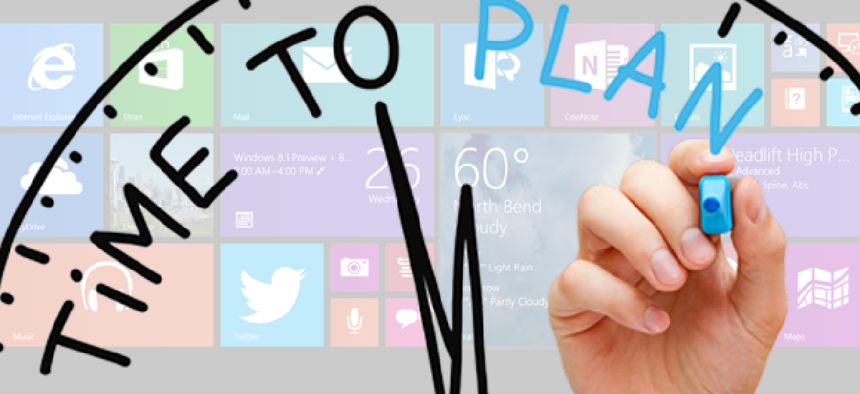Gartner: Start planning to move off Windows 7


Connecting state and local government leaders
Industry analyst firm Gartner recently suggested that enterprises need to make plans to move off Windows 7.
Government IT managers thinking they can catch a break from operating system upgrades might have to think again. Industry analyst firm Gartner recently suggested that enterprises need to make plans today to move off Windows 7, in its recently published report, Plan Now to Avoid Windows XP Deja Vu With Windows 7.
Migrating from Windows 7 may be an unwelcome message right now for many agencies. They may have just recently moved from Windows XP, or they may still be struggling with getting all of their machines off that 12-year-old operating system, which fell out of extended support back in April.
Microsoft's current flagship client OS is Windows 8.1, which is capable of running Windows 7 apps (Win32 apps) on the desktop side of the OS. The next Windows under development, called "Threshold" by Microsoft (or "Windows 9" by unofficial sources), is vaguely described by Microsoft as bringing back a Start Menu and allowing Windows Store Apps ("Metro") to run on the desktop side of the OS. Threshold is rumored to appear in the spring of 2015, but Microsoft hasn't said anything official about its arrival schedule.
Such vagueness means that planning for Windows 8/8.1 may be the main consideration for organizations. However, they still face coming to grips with some app compatibility issues when moving from Windows 7, the research and consulting firm contends.
Microsoft recently revised the product support lifecycle for Internet Explorer on supported Windows releases, explained Michael A. Silver, research vice president for endpoint computing at Gartner, and coauthor of the report, in an e-mail. That change in policy will accelerate the upgrade pressures for organizations using Microsoft's older browser versions.
"And now Microsoft has announced that Windows 7 will only be supported with IE 11 as of January 2016, meaning that IE 8, 9, and 10 will all lose support at that time," Silver said. "This presents more support and compliance issues."
Gartner's report particularly calls out Internet Explorer as one of the top application compatibility problems that IT pros will have to face in migrating to Windows 8/8.1.
Microsoft does have a remediation solution of sorts for organizations running Windows 7 or Windows 8.1. This new solution, called Enterprise Mode for IE 11 (EMIE), provides a means for organizations to run applications based on the older Internet Explorer 8 browser technology. The IE 11 browser emulates IE 8 technologies via Enterprise Mode. IE 8 was the most recent browser version that was supported on Windows XP, so many organizations may still have Web-based applications that depend on continuing to use IE 8 technologies.
EMIE apparently isn't perfect, though. It may have "bugs" and it can be "broken," Microsoft admitted, in a recent blog post. And Silver said that organizations haven't come around to embracing it.
"Orgs are not sold on EMIE yet, and it does not solve the compliance, support and validation issues discussed above," Silver explained. "Microsoft should not have included Windows 7 in the new policy. It's going to be a huge problem for customers."
On a practical note, Gartner's report offers three approaches for organizations using Windows 7 but considering moving to Windows 8/8.1. One approach is to put Windows 8 on new machines as those machines get replaced. A second approach would be to skip Windows 8 altogether and hold out for Windows Threshold or a subsequent release (Gartner thinks most organization will try to do this). The third idea is a total replacement of Windows 7 with Windows 8 machines, but Gartner doesn't see a compelling business case for that approach.
A longer version of this article appeared on Redmondmag.com, a GCN sister site.
NEXT STORY: Dousing wildfires with big data




